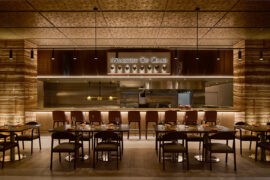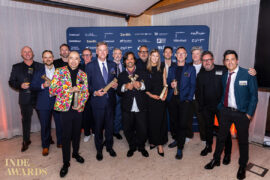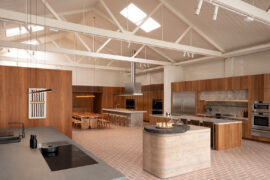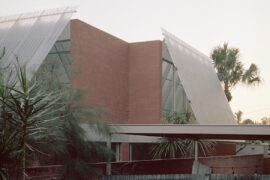As urban density continues to rise, and as population growth steadily grows, many of us are looking toward multi-residential buildings for the answer. Here’s why we love them!
Australian housing has always been symbolic: from stout colonial buildings and sprawling Victorian mansions to industrial era terraces and breezy weatherboard beach bungalows. Houses are forever marked with the context in which they were designed or built, showcasing the way that people have chosen – and been able – to live. This year, the new Multi-Residential Building category of the INDE.Awards will celebrate multi-residential projects and recognise the unique set of challenges and opportunities presented by the multi-residential typology.
The Multi-Residential Building category will honour projects that take into account scale, efficiency, and maximum occupancy as well as financial and time constraints to demonstrate that design need not take a back seat. The successful project in this category will grant equal consideration to community, sustainability, and experience alongside market needs, and demonstrate significant advancement of the architecture discipline by way of unique form, technology, and material selection. It will make innovative use of compact spaces and contribute to a strong overall urban or suburban character while representing milestone movement in the progress of design as a whole.
In 2018, the Multi-Residential Building category is proudly presented by Bosch, iconic German designers of kitchen and laundry appliances. For nearly 130 years, Bosch has taken a future-facing approach to design, recognising that living spaces of all sizes and nature deserve nothing short of the best home appliances. One of the most recognisable global names in appliances, Bosch powers countless kitchens, laundries, and homes around the world and has earned a reputation for reliability and innovation.




Bosch‘s passion for outstanding multi-residential design is rooted in a strong belief in the power of design innovation to solve problems and improve everyday quality of life. The company was one of the first advocates of the home refrigerator and early kitchen appliances, and in 1970s led the market in merging the washing machine and dryer into a single, efficient product. Bosch‘s pioneering spirit continues to thrive even today, as it works to convert its production facilities in Europe to manufacture products that do not release greenhouse gases and cause environmental harm.
Like the Multi-Residential Building category of the INDE.Awards, Bosch recognises the value of touching the earth lightly and sensitively, and understands that small may very well mean mighty.
INDESIGN is on instagram
Follow @indesignlive
A searchable and comprehensive guide for specifying leading products and their suppliers
Keep up to date with the latest and greatest from our industry BFF's!

For a closer look behind the creative process, watch this video interview with Sebastian Nash, where he explores the making of King Living’s textile range – from fibre choices to design intent.

From the spark of an idea on the page to the launch of new pieces in a showroom is a journey every aspiring industrial and furnishing designer imagines making.

Merging two hotel identities in one landmark development, Hotel Indigo and Holiday Inn Little Collins capture the spirit of Melbourne through Buchan’s narrative-driven design – elevated by GROHE’s signature craftsmanship.

At the Munarra Centre for Regional Excellence on Yorta Yorta Country in Victoria, ARM Architecture and Milliken use PrintWorks™ technology to translate First Nations narratives into a layered, community-led floorscape.

After more than two decades at Architects EAT, Eid Goh launches AIR, a new Melbourne-based studio focused on adaptive reuse, hospitality and human-centred design across commercial and civic projects.

With the opening of the 2026 INDE.Awards program, now is the time to assess your projects, ensure photography is at hand and begin your submissions.

Former INDE Luminary LeAmon joins the Design Institute of Australia (DIA) following more than a decade as the inaugural Curator of Contemporary Design and Architecture at the National Gallery of Victoria (NGV).

The Fisher and Paykel Melbourne Experience Centre by Clare Cousins Architects with Fisher and Paykel Design and Alt Group has been awarded The Retail Space at the INDE.Awards 2025. As a winning project, it redefines the possibilities of retail architecture by creating an immersive, material rich environment shaped by place, culture and craft.
The internet never sleeps! Here's the stuff you might have missed

With 26 shortlisted homes, a 13-member jury and four standout winners, the 2025 Habitus House of the Year program wrapped up last night in Sydney with Winnings.

Former INDE Luminary LeAmon joins the Design Institute of Australia (DIA) following more than a decade as the inaugural Curator of Contemporary Design and Architecture at the National Gallery of Victoria (NGV).